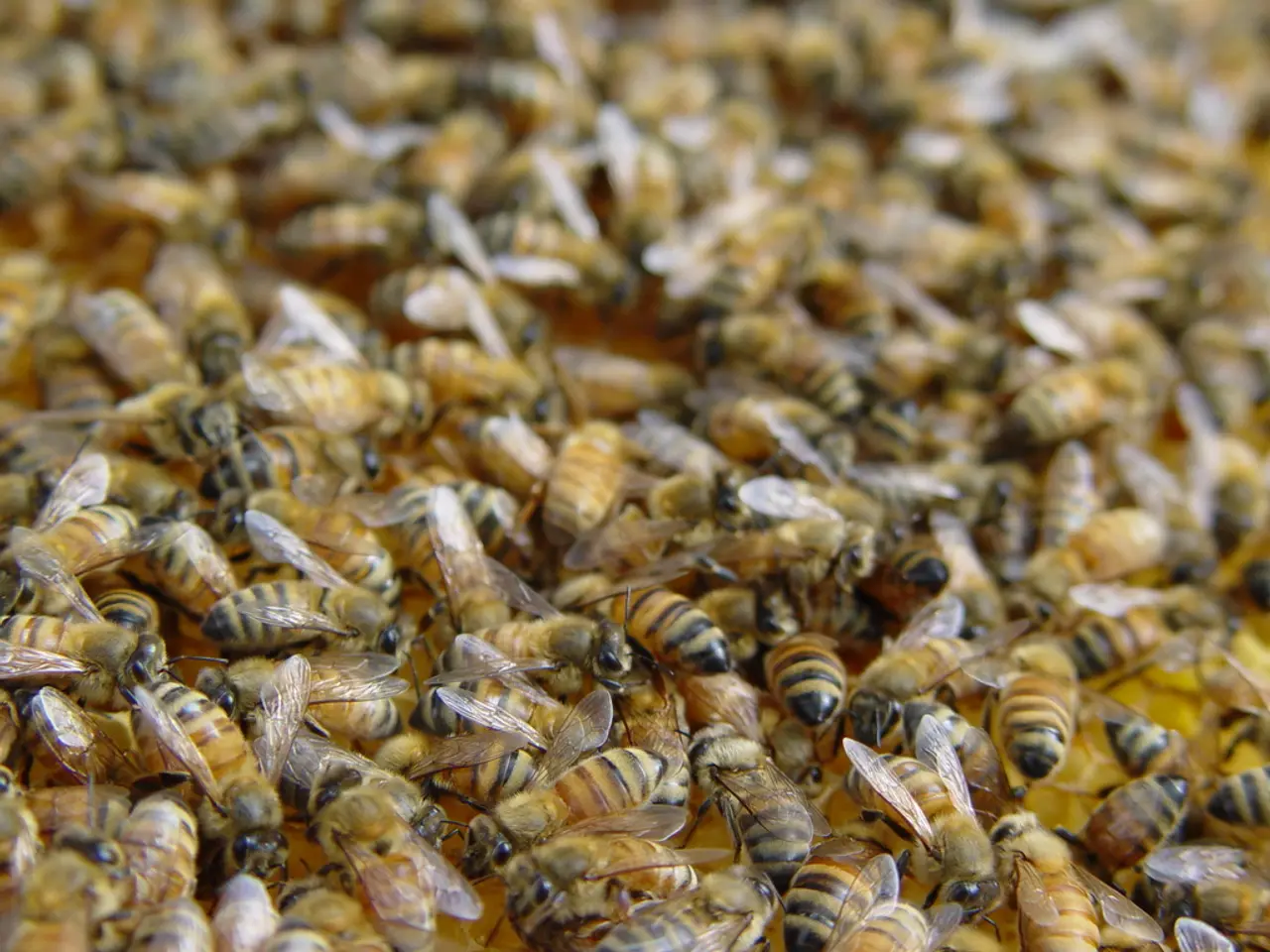Wasps' aggression: a human-centric issue or natural behavior? - Wasps' aggressive behavior: a look into nature or human influence?
Wasps, often misunderstood as aggressive insects, are generally not aggressive, according to Professor Giovanni Galizia of the University of Konstanz, who specialises in neurobiology and zoology. However, they can become defensive when disturbed or threatened, particularly during the summer months when their colonies reach peak size and food resources are in high demand [1][3][4].
The increased aggression of wasps during summer is primarily due to the high demand for protein and sugary substances. These nutrients are often found in human food and drinks, especially at outdoor activities like picnics and barbecues. Warm, sheltered environments near homes such as eaves, attic vents, garage rafters, or porch ceilings also attract wasps because they provide ideal nesting sites and proximity to food sources [1][2][3].
Yellow jackets, a common aggressive wasp species, also release alarm pheromones when disturbed, which recruits other wasps to defend the nest aggressively [4]. This behaviour can make encounters with humans more confrontational, as wasps may perceive our hectic movements and waving of arms as threats [2].
Wasps can be easily distinguished from bees by their flight patterns. While hoverflies, which look similar to wasps but are completely harmless, stay still in the air for a long time, wasps move back, left, and right when approaching a food source [5]. Bees, on the other hand, are indifferent to humans and don't deliberately approach the table, unlike wasps which seek protein sources [6].
Wasps are attracted to a variety of protein sources, including meat and sausages during outdoor activities like barbecues. They also scavenge for dead insects and small meat remains. Interestingly, wasps and bees generally avoid conflicts, according to Galizia [7].
It's important to note that accidentally consuming a wasp with food can lead to the wasp stinging, which can be life-threatening for humans due to potential swelling of mucous membranes causing shortness of breath [8]. Therefore, it's advisable to avoid blowing away wasps, as carbon dioxide in breath acts as an alarm signal for them [9].
The great time of wasps begins in June, with more activity in August and September, according to Galizia, as this is when the queen prepares for the next year by fattening up [10]. The bright yellow head of a wasp, with a black dot, can help distinguish it from a bee, whose head is "rather brown" [11].
In conclusion, understanding wasp behaviour during summer months can help us coexist peacefully with these insects. By avoiding disturbing their nests and being mindful of our actions around food sources, we can reduce the likelihood of encounters leading to stings.
- Wasps, often misunderstood as aggressive insects, are primarily agitated during the summer due to their high demand for protein and sugary substances in human foods and drinks, especially at outdoor activities such as picnics and barbecues.
- In the realm of science, Professor Giovanni Galizia, a neurobiology and zoology expert, has noted that wasps can become defensive when disturbed, such as during peak colony sizes and high food demands in the summer.
- Coping with wasps during health-and-wellness, fitness-and-exercise, and lifestyle activities, like picnics and barbecues, requires mindfulness to avoid disrupting their nests and reduce sting encounters.
- Nutrition-wise, humans should be aware that accidentally consuming a wasp with food can result in a life-threatening reaction due to potential swelling of mucous membranes causing shortness of breath, making it important to avoid disturbing them with actions like blowing towards their nests.




